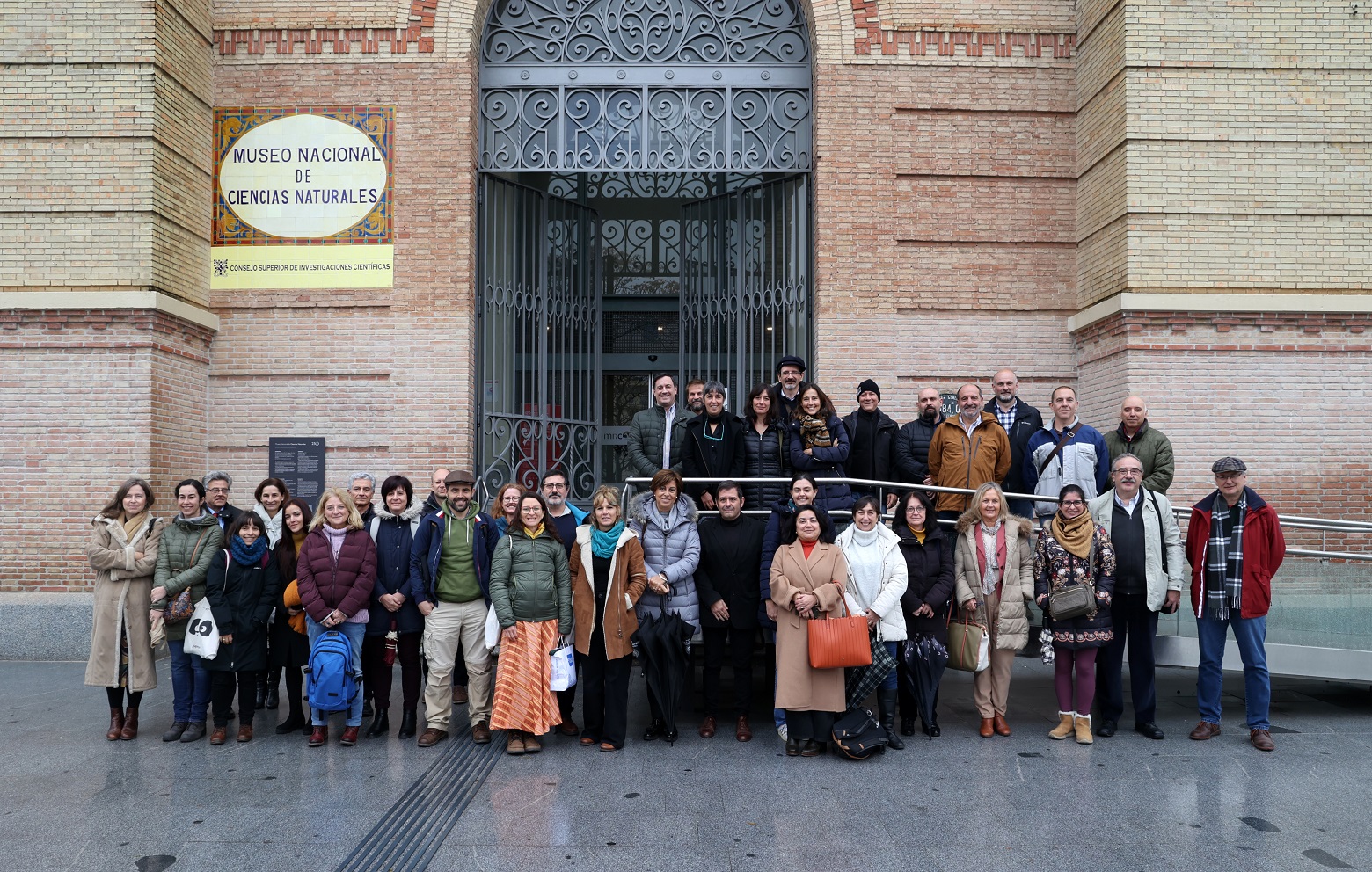The staff of the Scientific Collections (ICTS-RBD) has participated in the 1st Meeting of the NN-DiSSCo-ES infrastructure, within the INFRA20012 Project (financed by the CSIC's GII Program). This event took place last Monday, December 12, at the National Museum of Natural Sciences in Madrid (MNCN-CSIC). The aim was to bring together the future actors of the Spanish Node of this infrastructure, in order to inform, explore and program the necessary actions for the incorporation of all these institutions into the ESFRI DiSSCo RI https://www.dissco.eu/ during the transition and construction phase.
The Natural History Collections have been essential for the study of biodiversity, ecology and environmental sustainability. During the last decades, new research techniques, both in the digital and molecular areas, have multiplied the amount and diversity of information, and offer the possibility to develop tools that combine data stored in scientific collections with other sources on species, genomes, phenotypes, geography, geology and environment, ensuring open access to massive and accurate data throughout the research life cycle. DiSSCo is a new Research Infrastructure (RI) that aims to integrate and standardize the information present in the Natural Science Collections. Its goal is to create a new model for European collections that digitally unifies all European natural science assets under common access, conservation, policies and practices that ensure that all data is easily searchable, accessible, interoperable and reusable (FAIR principles).
DiSSCo RI will put a value on the natural heritage of the institutions that house scientific collections, demonstrating the indispensable role of biodiversity data in addressing important questions from the scientific world. Scientific Collections of EBD (integrated in ICTS-RBD) actively participate, together with other Spanish natural history collections, to achieve the objectives proposed by the Spanish Node and thus position themselves at the level of excellence that will allow our future integration in this European ESFRI









 ¡Abierta convocatoria para proyectos de investigación en la ICTS- Doñana!
¡Abierta convocatoria para proyectos de investigación en la ICTS- Doñana!


